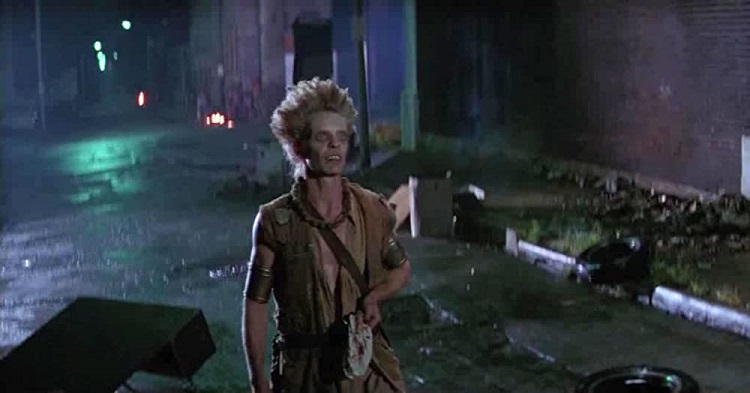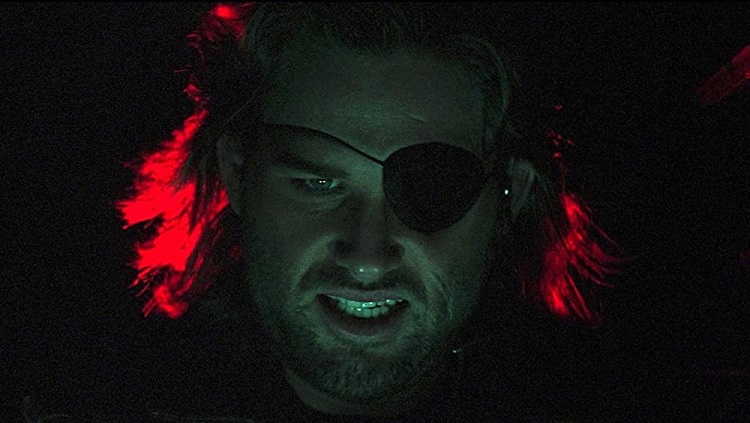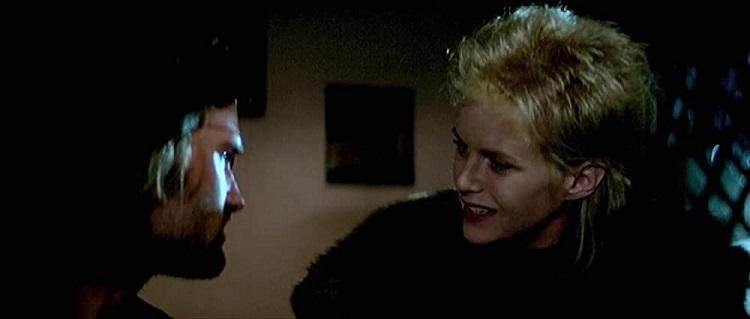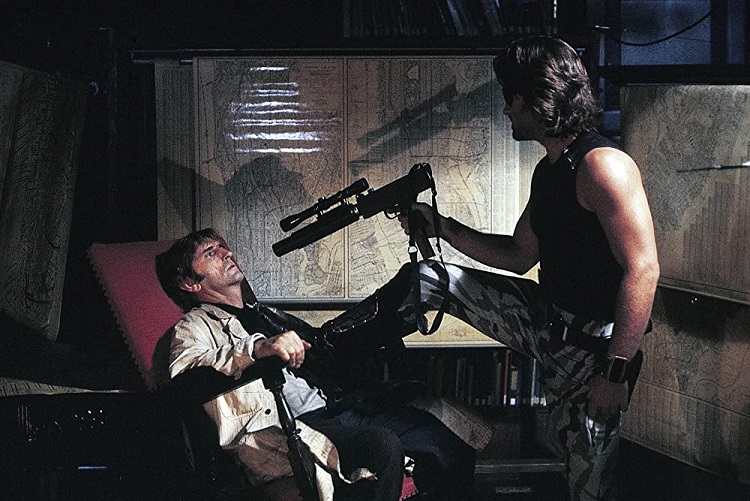Call Me Snake | Escape From New York at 40
America has always feared its cities, and no city has inspired more fear than New York in the 1980s. From the 1960s onward crime rates gradually increased in the Big Apple, driven by ideologically motivated underinvestment in social services and the gradual self-sustaining nature of social rot. By the 1970s this trend had been noticed by the media, with films like Death Wish in 1974 and The Warriors in 1979 representing the general view of a city ruled by criminals. At the same time, the Watergate scandal obliterated public trust in the government’s ability to deal with anything, really. It was in this environment that John Carpenter had the idea: what if they didn’t bother trying to deal with crime in New York City? What if they just decided to wall it all off to make it go away? That’s the premise of Escape From New York.

John Carpenter was hot property in Hollywood at the time. Having won an Oscar at the age of 22 for Best Short Film, he’d gone on to direct several films over the course of the 1970s. His breakout hit was Halloween in 1978, a work inspired by Italian giallo movies that became one of the foundational works in the slasher genre. Filmed on a budget of $300,000, the film made over $65 million at the box office. That profit margin opened a lot of doors in Hollywood. Carpenter preferred to work as an auteur. As well as directing, he co-wrote the script (alongside his producer Debra Hill) and even composed the famous score for the film. He followed it up with another horror movie, The Fog. Then he picked back up a story he had written in 1976, which became his next movie.
Carpenter had written the script originally in the days after Watergate, and it was infused with the cynicism of America at the time. It was “too scary and weird” for most studios, until Carpenter became a star director. Even then he knew it needed something more. He had a friend, Nick Castle, who was a comedy scriptwriter (and who had been under Michael Myers’ mask in Halloween). Between the two of them (with the assistance of Debra Hill once again) they turned that script into Escape From New York.

The film had been partially inspired by Death Wish (less the plot than the mood, and the idea of “New York as a jungle”), and the studio wanted Charles Bronson to play the lead. They also advocated for Tommy Lee Jones, who had starred in The Eyes of Laura Mars, a thriller Carpenter wrote. Carpenter wanted an actor who would follow his directions, though. He was worried Bronson or Jones would try to exert too much control. Instead, he decided to follow the “dark comedy” theme and cast a comedy actor: Kurt Russell.
It’s impossible to overstate how much Escape redefined Kurt Russell’s career. Born in 1951, he appeared in several shows (including The Man From UNCLE) as a child actor. At the age of 15, he signed a ten-year contract with Disney. (The same year Walt Disney died of lung cancer, and one of his final acts was to write “Kurt Russell” on a piece of paper. Nobody, not even Russell, knows why.) Russell made several movies before he had his breakout Disney hit, The Computer Wore Tennis Shoes. He starred in two sequels to it, and a few other comedies, over the 1970s. He was typecast as a “nice guy” comedy actor, an everyman hero. Escape changed that by giving him his most iconic role as “Snake” Plissken.

The basic premise of the film is that the President’s plane has crashed inside the prison island of Manhattan, and Plissken (a one-eyed ex-war hero turned criminal on his way to the prison) is offered a pardon in exchange for getting him out. The thin premise is given life by the cast, which included cult film favourites like Isaac Hayes and Harry Dean Stanton, alongside industry veterans like Donald Pleasance and Lee Van Cleef. The standout performance is Russell’s, though. He trained heavily for the role and imbues Snake with a physicality and charm that burned him into the cultural zeitgeist.
Castle had added the dark comedy to the film, but Carpenter’s direction added another genre to the mix. Horror. Especially in the early scenes after Snake arrives in New York and is exploring it alone, when dark figures run through the background and the score ratchets up the tension. This culminates in an attack by sewer-dwelling inmates, in a scene that feels like it came from a zombie movie. The film shifts gears right after this, but it does drive home how bleak life within the prison city is. Yet it’s shot through with rays of light – the first people Snake meets, in an earlier scene, are the audience at a theatre watching a drag musical about the state of New York. It’s only a short moment, but it helps to make the whole world feel more alive.

The film is a masterclass in that sort of minimalistic worldbuilding. We know that Snake is a war hero, from a war against Russia. And we know that he now regards his country with contempt, having turned to a life of crime. How he got from one to the other is left to us to fill in. The line – “You flew the Gullfire over Leningrad, didn’t you?” – is credited by seminal cyberpunk author William Gibson as helping him define the style of his breakout novel Neuromancer. It’s just one of the works that took their tone and dystopian notions from Escape from New York, which like Halloween before it came to define its own genre. Another well-known influence was on videogame auteur Hideo Kojima. His protagonist Solid Snake took his name and a lot of his attitudes from the film, something made explicit in Metal Gear Solid 2 (set off the coast of New York) where Snake uses the alias “Lieutenant Plissken”.
Escape From New York was a major financial success on release. Against a budget of $6 million, it made $25 million at the box office. Carpenter followed it up by reuniting with Russell for The Thing the following year, which while an excellent movie was a financial disappointment (being up against E.T. at the box office probably didn’t help). Carpenter was forced to take two “directing-only” jobs (Christine and Starman), and while he did some amazing work in the rest of the 80s (Big Trouble In Little China, Prince of Darkness and They Live) the days of him being a popular mainstream director had ended.

In 1996, on the 15th anniversary of Escape From New York’s release, Kurt Russell returned to the role of Snake Plissken in a Carpenter-directed sequel called Escape From LA. The plot is similar to the original, though it replaces the satire on inner-city decay with taking shots at televangelism, California culture, and more. Despite a great cast and being a lot of fun, the movie failed to land with the mid-90s film audience.
The failure derailed a planned third film in the trilogy, Escape From Mars, which would have released in 2001. The movie was reworked into Ghosts of Mars, with Natasha Henstridge landing the lead role and the Snake Plissken part turning into the character of “James ‘Desolation’ Williams”. Carpenter’s original pick for the role, Jason Statham (a man who very much has “Snake Plissken energy”) was replaced with Ice Cube by the studio in the hopes of attracting an audience with his star power. The movie bombed, and in the 20 years since Carpenter has only directed one movie (2010’s hospital horror The Ward).
[perfectpullquote align=”full” bordertop=”false” cite=”” link=”” color=”#f42a2a” class=”” size=””]Further Reading | I Know That Face | Donald Pleasence [/perfectpullquote]
Crime in New York began to take a downturn in the early 1990s under Mayor David Dinkins (though his successor, Rudy Giuliani, stole the credit for the change). Rehabilitating dilapidated areas and a program to reduce homelessness numbers through social housing achieved what empty “tough on crime” rhetoric could not.
40 years later Escape From New York has become what most science fiction inevitably does: a time capsule that shows us what people feared the future might be. The prominent role the Twin Towers play in the story is a reminder that this is a world that never was. But in my view, that only makes it better, less a cautionary tale and more a view of the future from the past. Snake’s world is not ours, but that doesn’t make him any less cool.
Images via IMDB.

